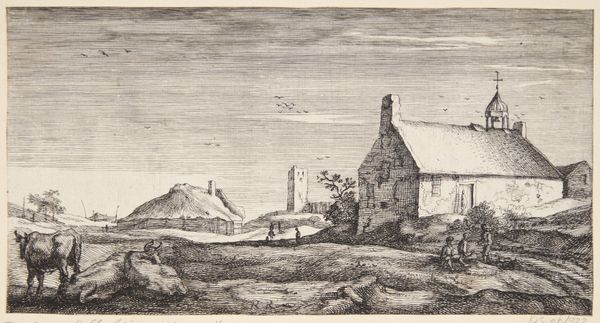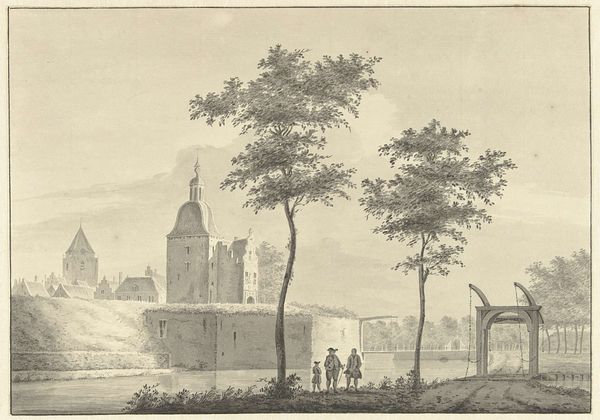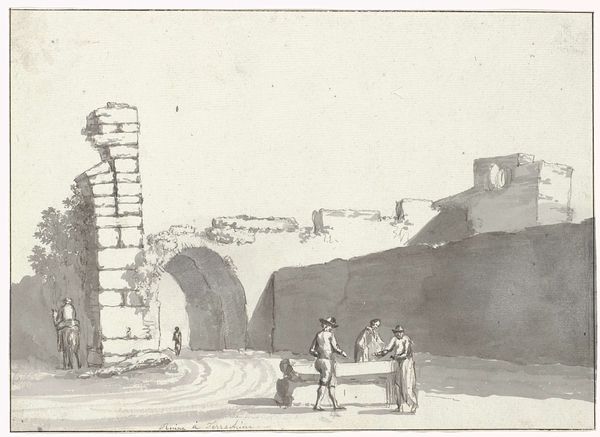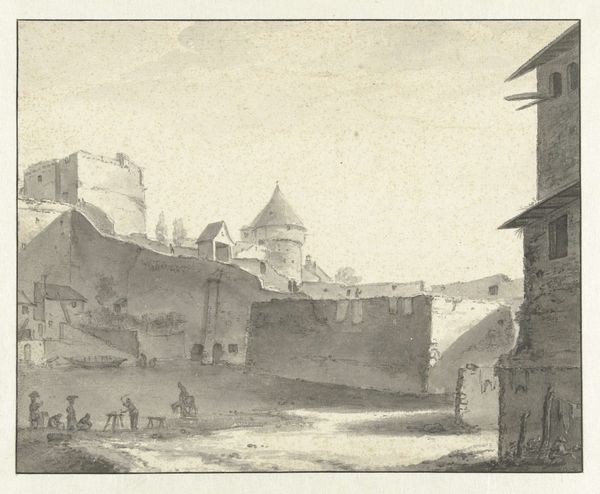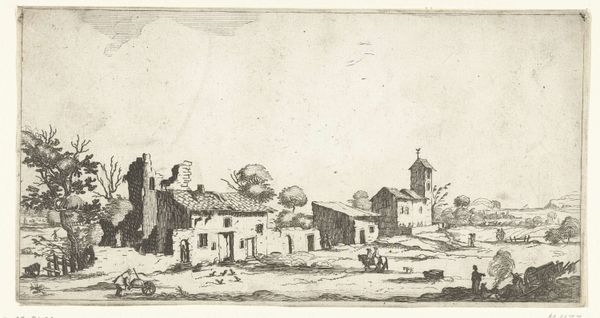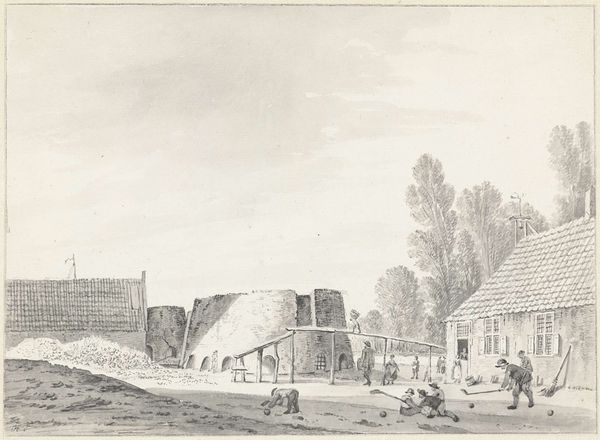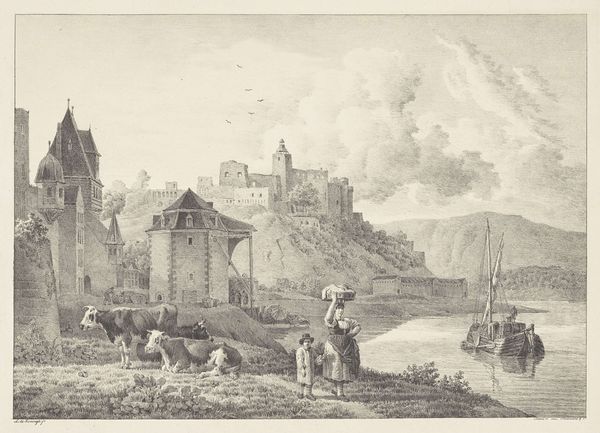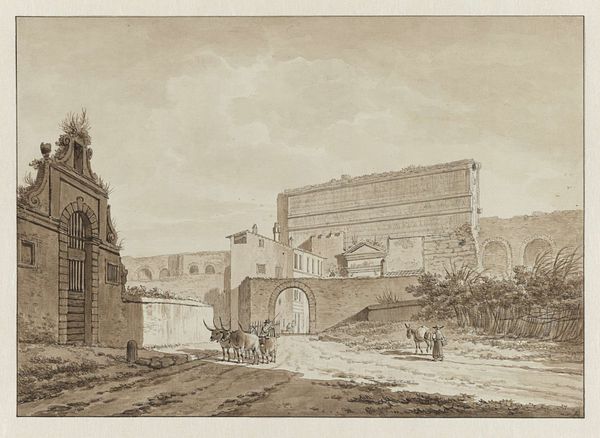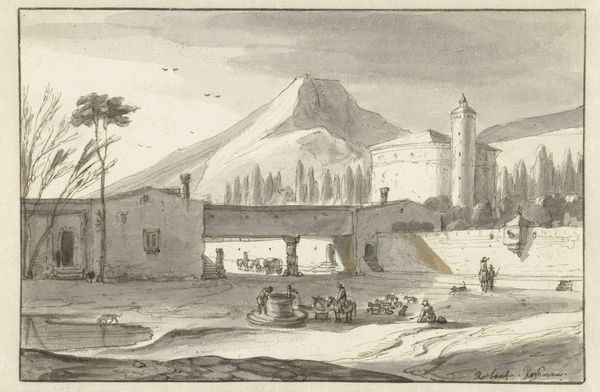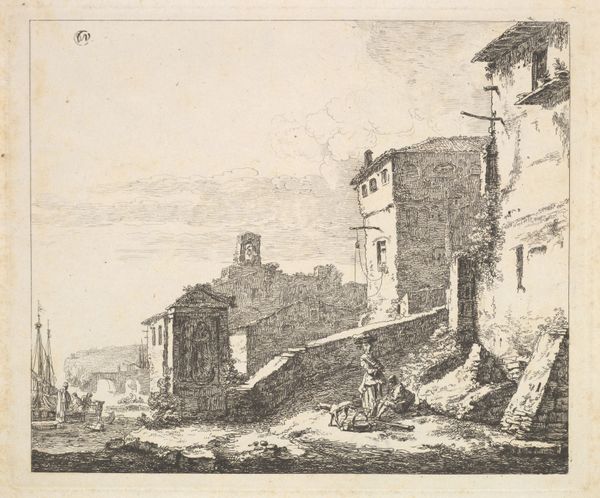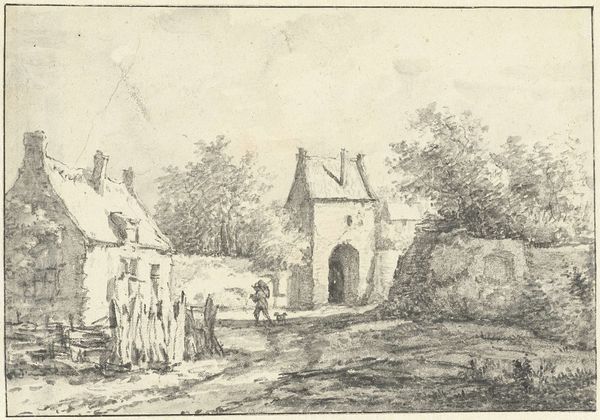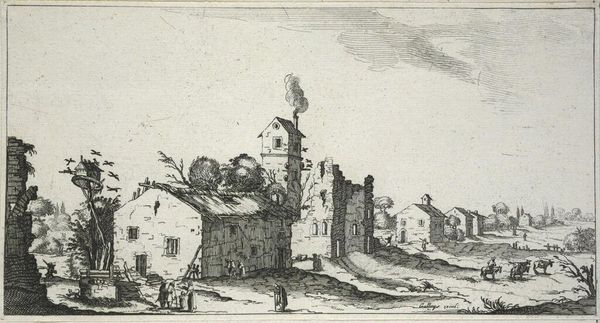
drawing, paper, watercolor, ink, pencil
#
drawing
#
dutch-golden-age
#
landscape
#
paper
#
watercolor
#
ink
#
pencil
#
cityscape
#
genre-painting
Dimensions: height 236 mm, width 414 mm
Copyright: Rijks Museum: Open Domain
Editor: So, here we have Lambert Doomer’s “Stadsmuur bij de Erdre te Nantes,” dating from 1670 to 1675. It's an ink, pencil, and watercolor drawing on paper. I'm struck by the seemingly casual arrangement of the figures against the backdrop of what looks like a very solid, imposing city wall. What story do you think it tells? Curator: The Dutch Golden Age was fascinated with representing urban spaces and landscapes. Consider the politics inherent in portraying these fortifications. Were they symbols of civic pride, reminders of conflict, or even subtle critiques of municipal authority? Doomer’s choice of a slightly elevated perspective seems intentional – framing not just the architecture but its role within society. What is the impression on a public space versus the power structures inherent to its composition? Editor: That’s interesting. It hadn't occurred to me that there might be political messaging within what seems like a straightforward cityscape. It makes me consider why certain views, like this one, were selected for representation. Curator: Precisely! Who commissioned or purchased such scenes, and what messages did they seek to convey or consume? Note the ordinary individuals situated near the foreground. Do their postures or placement communicate a shared history of the period? Editor: The everyday presence of those figures offers a contrast. Perhaps the artwork served as a means for its commissioner to illustrate their social standing relative to these infrastructures. Or simply they were a representation of social change during this historical period. Curator: Excellent observations. Reflecting on this piece helps us appreciate how even seemingly objective depictions are infused with cultural and historical nuances. Editor: It changes my interpretation, seeing the drawing now as a potential statement about power, history and social strata during the Dutch Golden Age. Thanks!
Comments
No comments
Be the first to comment and join the conversation on the ultimate creative platform.
